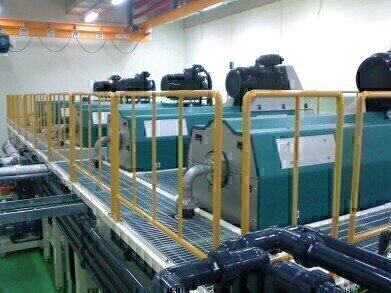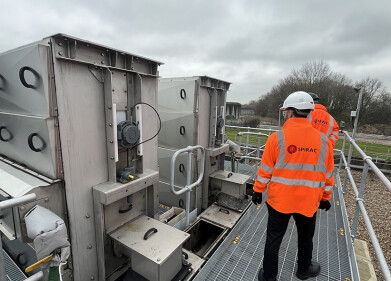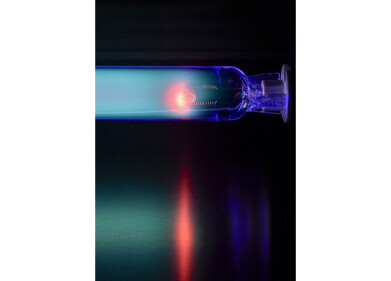Water/Wastewater
Crystal-Clear Images on Large-Format Screens – Plasma Technology is Opening up a New Dimension of Image Rendition
Mar 23 2010
Samsung SDI, based in Seoul (Korea), is today one of the leading manufacturers in the world of semiconductors, telecommunications equipment and digital media with group sales of USD 103.4 billion in 2007. The company has established a presence with 134 branches in 62 countries, and employs around 150,000 persons. Samsung is a leader in the production of flat-screen TVs, memory chips, mobile phones and TFT-LCD displays, and is known as one of the most rapidly expanding brands throughout the world. Glass plates which are coated are the basis of the production of the plasma system and also the LCD system. For this purpose, a functional paste is applied and then fixed by photo-electric means. In this way, a matrix (a semi-permeable paper) is used to create numerous dots on the glass plate. The main difference between plasma and LCD is that the plasma plate is self-illuminating, whereas the LCD screen requires an additional light source. The plasma screen utilises the emission of UV radiation by a low-pressure plasma. The method of operation is similar to that of a fluorescent lamp. The structure of plasma screens is relatively simple. Between two coated glass plates, there are a large number of small chambers. Three chambers are grouped together to form one so-called pixel. Each of the three chambers is lit in one of the three primary colours, thus producing the entire colour spectrum.
That part of the paste which is not fixed in the coating process is washed off the glass plate. Because a relatively large quantity of water is required for this washing process, Samsung required a facility for processing this process water so that it could be reused as often as possible. In the first stage, the wash water which is enriched with mineral oxides is micro-filtered and thus concentrated. A second stage is necessary for the final separation of solids. And this is where GEA Westfalia Separator decanters are used. Under normal conditions, a separator with its very high clarifying performance would have been the traditional machine of choice for the process water with the low level of solids load and the very small particle diameters. However, GEA Westfalia Separator (Germany) has succeeded in reequipping and adjusting decanters in such a way that they are ideal for this application. This is because the major advantage of decanters is that they are better at discharging the solids. As is the case in this respect: the very viscous solids are discharged absolutely dry. The heart of the treatment system is the decanter UCD 535.
With this process water processing concept, GEA Westfalia Separator was able to convince Samsung to use decanters in its new production facility in Korea. This was preceded by product trials in the laboratory of the Central Process Engineering department in Oelde, in order to identify the correct machine technology. As a result of the convincing arguments, an order was placed for five UCD 535 decanters and control units in mid-2008. The order entailed numerous challenges, such as an extremely short delivery time of only two months, which it was absolutely essential to meet: all decanters and control units were delivered on time. As a result of the time pressure, Samsung even arranged for the decanters to be flown to Korea. GEA Westfalia Separator Korea then assumed responsibility for installation and commissioning, so that production of the new plasma display series in Korea was able to start before the end of the year.
Events
May 05 2024 Seville, Spain
May 13 2024 Munich, Germany
May 23 2024 Beijing, China
May 23 2024 Beijing, China
Jun 10 2024 Algiers, Algeria













